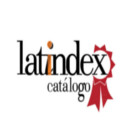Indexing services

Standards for Authors
Only original and unpublished academic papers not being simultaneously submitted to other journals or editorial bodies are accepted for publication. Individually or collectively authored. The languages accepted are Spanish, Portuguese and English.
Contributions may be:
Thematic dossier: The Editorial Committee may decide, on its own, at the suggestion of the Academic Advisory Committee or other interested parties, whether to publish a thematic dossier to be included in some of its issues. This section may contain a presentation, articles written by invited authors and other original articles. The submission of contributions to this section -whenever there is a call for papers- shall be open. Contributions to the Dossiers shall meet the same requirements for the submission of articles and follow the same evaluation process: a first evaluation by the Editorial Committee and the editors of the dossier, who will ensure that the article conforms to the standards and approach of the journal and to the thematic area of the dossier. In a second evaluation instance, contributions shall be evaluated by peers implementing a double-blind system.
IMPORTANT: Only one article per author shall be published either in the same issue or in two consecutive issues of the Journal.
Submission
Contributions will follow the following rules:
Submission
As of September 2021, articles may only be submitted through this website using the “Submissions” section or by clicking on the “Submit an article” button.
For further information, please write to revistaiice@gmail.com
State the relevant section in which the submission should be included (Thematic Dossier, Permanent Call for Papers or Reviews).
IMPORTANT: Reception of papers does not imply their publication. The Editorial Committee shall decide on the inclusion of articles in the journal according to the thematic priorities and space available.
Article evaluation process
The papers received are subject to a first evaluation by the Editorial Committee, in order to verify whether they meet the requirements of the journal’s profile and all its formal editorial guidelines. If accepted, this body proposes two external evaluators specialized in the subject matter, either from national or international universities, who shall revise each article. The anonymity of authors and reviewers is maintained throughout the process.
Copyright
Authors who publish in this journal accept the following conditions:
Publication is free of charge. At no time will the author be charged for publication in this journal.
The names and e-mail addresses entered in this journal shall be used exclusively for the purposes herein set forth and shall not be provided to third parties or used for other purposes.

Revista del IICE | ISSN 0327-7763 (impreso) ISSN 2451-5434 (en línea)
Instituto de Investigaciones en Ciencias de la Educación - Filo:UBA
Puan 480, 4º piso, of. 440 - CABA - Buenos Aires
tel. 5287-2870
iiceuba@filo.uba.ar | iice.institutos.filo.uba.ar